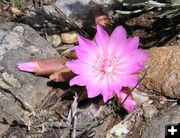
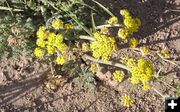
Desert Parsley
This plant has an edible root. Its leaves have a strong, parsely-like flavor. Not to be confused with parsley desert buckwheat.
|


Yellow Desert Paintbrush
Most of us think of desert paintbrush as being that much-loved flaming vermillion color, but paintbrush comes in yellow, too.
|

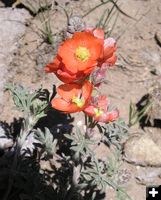
Orange Globe Mallow
Conspicuous in the sagebrush, this desert-loving relative of the hollyhock and hibiscus is making a big splash this year.
|

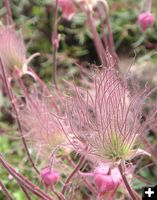
Old Man's Beard, Revisited
Our previous story on Wildflowers of the Sagebrush Steppe had a photo of a flowering old man’s beard. This is the fruiting stage of the plant, showing the feathery strands designed to catch the wind and carry the seeds to new territory.
|

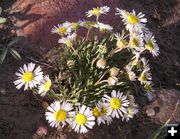
Plains Daisy
Prevalent in the dry, thin, rocky soils of Wyoming’s steppelands, the plains daisy turns a barren landscape into a rock garden.
|

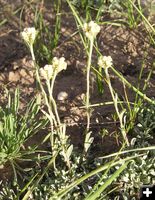
Pussytoes, or Everlasting
Common in the sagebrush plains, everlasting (also called Pussytoes due to its fuzzy, rounded flower) can also inhabit high-elevation forests. The flowering stalks last a long time (duh) and are nice in flower arrangements.
|

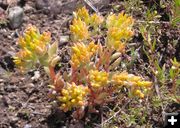
Stonecrop
Also known as sedum, this is a summer blooming succulent, so in Pinedale we should be seeing more of these in the coming weeks.
|

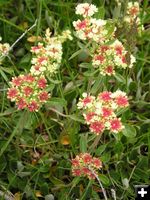
Umbrella Desert Buckwheat
In our earlier story, we noted that the many species of desert buckwheat constitute a very large part of the plant population on the sagebrush steppe. This variety is most common in the Great Basin and Colorado, and enjoys a wide variety of habitats.
|

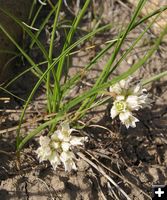
Wild Onion
Yes, it’s common. But isn’t it nice to know there’s always something at hand with which to season our deer or rabbit stew?
|

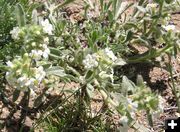
Cryptantha
Annual, biennial and perennial cryptantha are present in our area. These inconspicuous plants with soft, hairy leaves shelter at the base of sagebrush, and are quite beautiful close-up.
|
| |
